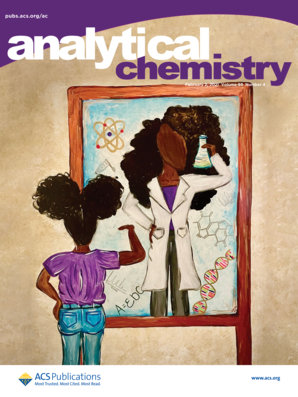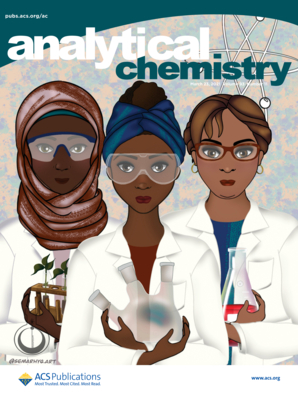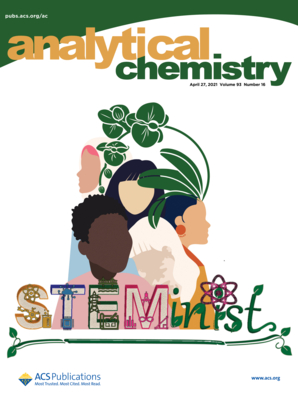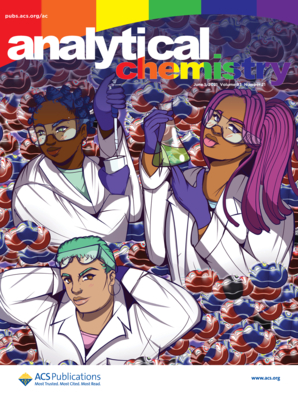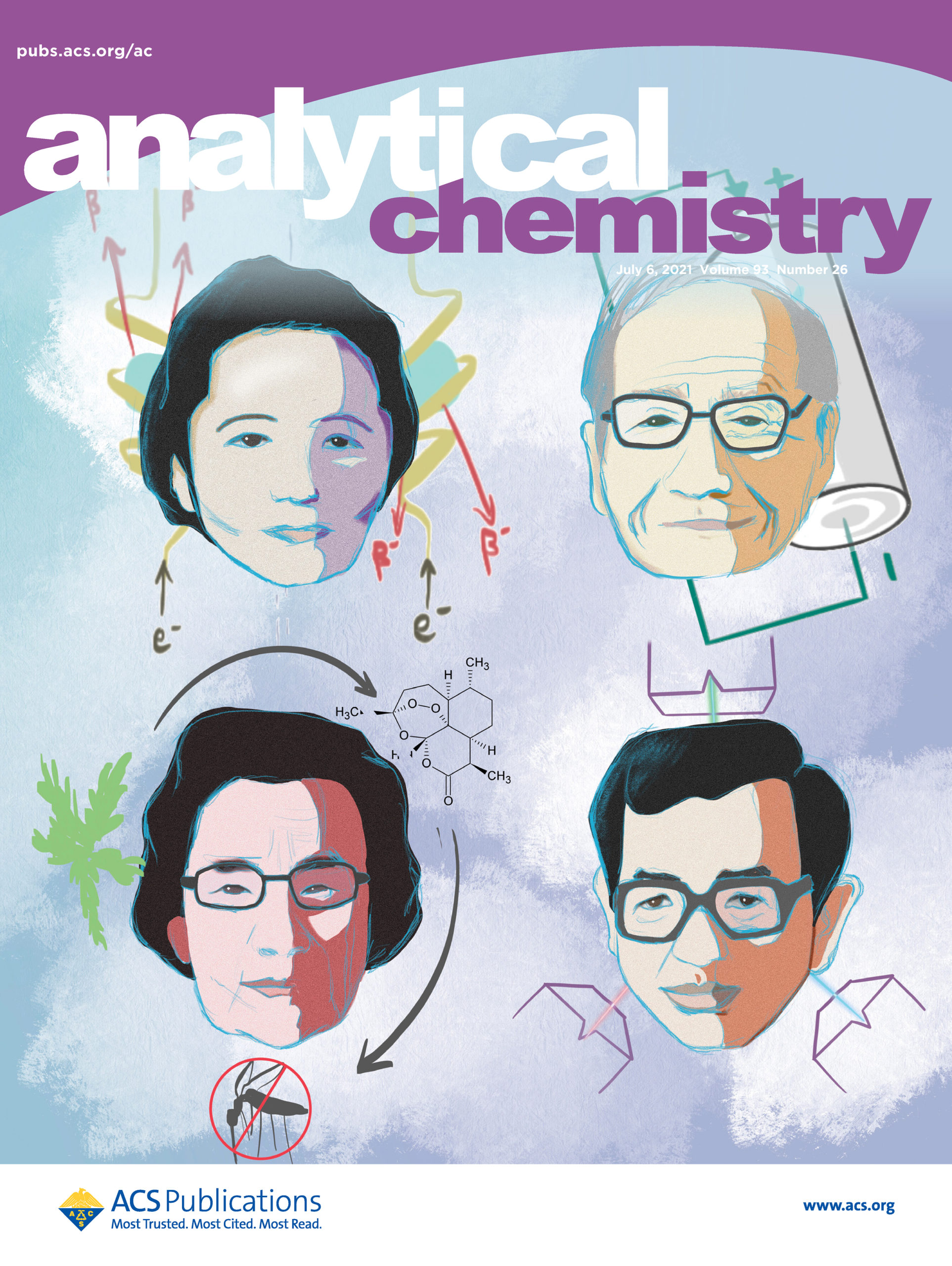How can creative output at the nexus of art and science help with the much-needed efforts to promote diversity in science? In this post, I’m excited to tell you about one initiative I’ve been involved with, and highlight the amazing artists who have contributed their work to the project.

In addition to being a chemistry professor and helping to run the NSF Center for Sustainable Nanotechnology, I am also an associate editor for a scientific journal called Analytical Chemistry. Most of the time, my work as an associate editor includes reading research manuscripts that scientists submit to the journal, deciding which other scientists should give feedback on these manuscripts as part of the peer-review process, and then making a decision, based on those reviews, about whether or not the journal should publish the manuscript, making it widely available to the scientific community. This peer-review process is very important because it is the way that scientists check each other’s work. Most scientific papers improve significantly during the peer review process because the reviewers ask for extra experiments that make the work more complete, or suggest alternate ways to explain results so they are easier for readers to understand.
What I haven’t spent much time on, as an editor or a writer of research articles, is thinking about journal cover art. This is especially true now that I only read scientific articles online instead of in a bound hard copy at the university library. Despite this, scientific journals still publish cover images with each weekly or monthly issue. Managing editors usually pick an image to go with one of the “hottest” articles in the issue, and the covers are featured on the journal’s website and in social media; it is considered an honor when scientists’ results are featured on a journal cover. In fact, CSN research has been featured on several journal covers. Many practicing scientists will print a fancy version of their scientific covers, frame them, and hang them in their offices as a point of pride.
A few of the beautiful cover images based on CSN research:
Personally, journal covers have never been something that I focused on (perhaps because I think of myself as lacking in artistic ability). But that lack of focus has changed recently based an exciting new initiative at Analytical Chemistry.
While attending a summer 2020 workshop focused on the issue of racism in academia, I was inspired to propose that Analytical Chemistry commission work by BIPOC (Black, Indigenous, & People of Color) artists to feature BIPOC chemists on the journal’s cover. The journal staff and publisher agreed to provide funds for up to eight cover commissions in 2021, and we wrote an official call for art. I had no idea what kind of response we would get and have been very excited and impressed. The first cover from the series was published in February, with an amazing editorial from the artist Dr. Jeanita Pritchett1 (pictured above with her painting), and the second gorgeous cover and editorial in the series, by Dr. Semarhy Quinones,⁶ was published in March. We followed in April, June, July, and August with creative covers and thoughtful editorials from Anisa Tariq, Kemi Oloyede, Jeffrey Tao, and Leah Metters.7-10 Adding the LGBTQ+ pride flag colors to the Analytical Chemistry font at the top of the June cover was highly unusual and very exciting to me.
All of the covers are inspiring to me, telling important stories about who belongs in and advances science. I know that having an inspiring image does not fix the lack of diversity in chemistry, but it feels good to celebrate a population of chemists who are too often underrecognized. Of course, one of the goals is that young people will see themselves in these images or be inspired by the personal stories shared in the accompanying editorials and choose to pursue a career in chemistry.
When we first launched this initiative, I was worried that we wouldn’t have enough interest to create eight covers – I had no idea if there were artists who would care about the cover of a scientific journal. I’m happy to report that we’ve got art for all eight of the covers that ACS initially agreed to fund, and even more for future covers. Additionally, the journal publisher has agreed to produce products with the artists’ images (think mugs, posters, decks of cards, etc) where all of the profit will go back to the artist. We’ll be sure to announce when these become available!
We’re also working on plans to auction off the original artwork and use all proceeds to benefit BIPOC chemistry students. My stretch goal now is to have a time next year when all of the scientific journals published by the American Chemical Society feature commissioned cover art that celebrates diversity among chemists. I can imagine going to the publisher’s homepage where all of the current journal covers are tiled together and seeing a mosaic of art that features chemists as diverse as the human population doing chemistry. Two lessons that I’ve been reminded of with this bit of “artivism” is (1) that images and stories are powerful and (2) that scientific and artistic creativity are related and both critically important. This is most evident to me based on the social media responses each time a new cover is posted, where many people are emboldened and encouraged by the powerful images presented on these journal covers.
References
- Pritchett, Jeanita. See it. Believe it. BECOME it! Analytical Chemistry, 2021, 95(4), 1853–1854. doi: 10.1021/acs.analchem.1c00038.
- Ma, C., Borgatta, J., Hudson, B.G. et al. Advanced material modulation of nutritional and phytohormone status alleviates damage from soybean sudden death syndrome. Nature Nanotechnology, 2020, 15, 1033–1042. doi: 10.1038/s41565-020-00776-1. Cover art by Ella Marushenko, Kate Zvorykina, & Bethany Vukomanovic.
- Cui, Q., Hernandez, R., Mason, S., et al. Sustainable Nanotechnology: Opportunities and Challenges for Theoretical/Computational Studies. Journal of Physical Chemistry B, 2016, 120(30), 7297–7306. doi: 10.1021/acs.jpcb.6b03976. Cover art with help from Gene Chong, Caley Allen, Leili Zhang, Xu Huang, and Professor Wonpil Im.
- Hurley, K., Ring, H., Kang H., et al. Characterization of Magnetic Nanoparticles in Biological Matrices. Analytical Chemistry, 2015, 87(23), 11611–11619. doi: 10.1021/acs.analchem.5b02229. Cover art by Ella Marushenko.
- Melby, E. et al. Formation of supported lipid bilayers containing phase-segregated domains and their interaction with gold nanoparticles. Environmental Science: Nano, 2016, 3(1), 28-44. cover doi: 10.1039/C6EN90002J; article doi: 10.1039/C5EN00098J
- Quiñones-Soto, Semarhy, See a Scientist. Be a Scientist. Analytical Chemistry, 2021, 93(11), 4685–4686. doi: 10.1021/acs.analchem.1c00887.
- Tariq, Anisa. Steminist – Embodying All Women in STEM! Analytical Chemistry, 2021, 93(16), 6289–6290. doi: 10.1021/acs.analchem.1c01374.
- Oloyede, Kemi. Queer, PoC, Creative, STEM. Analytical Chemistry, 2021, 93(21), 7541–7542. doi: 10.1021/acs.analchem.1c01826.
- Tao, Jeffrey. Celebrating Asian Scientists. Analytical Chemistry, 2021, 93(26), 9011-9012. doi: 10.1021/acs.analchem.1c02251.
- Metters, Leah. Science is Magic. Analytical Chemistry, 2021, 93(30), 10389-10389. doi: 10.1021/acs.analchem.1c02899




